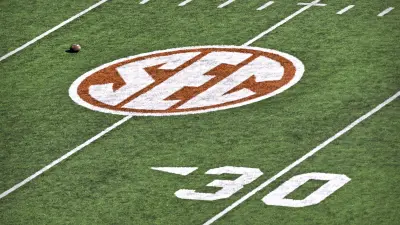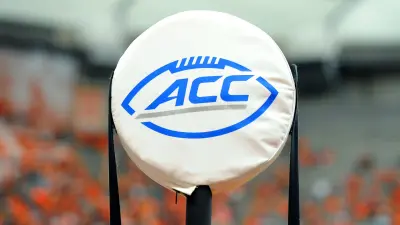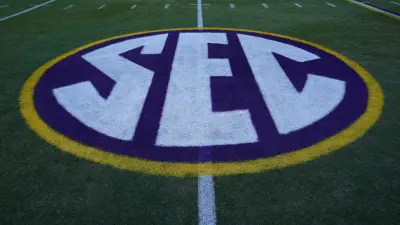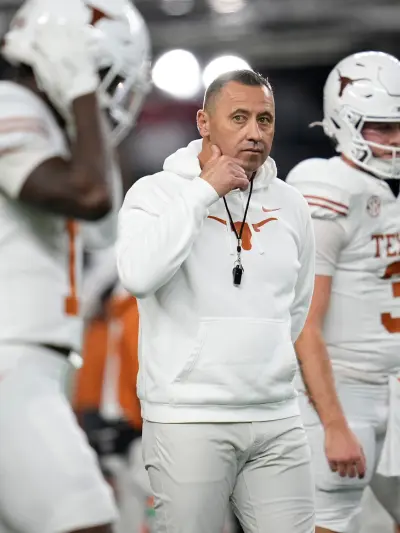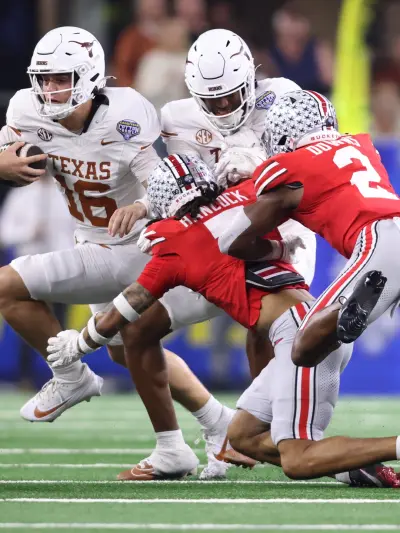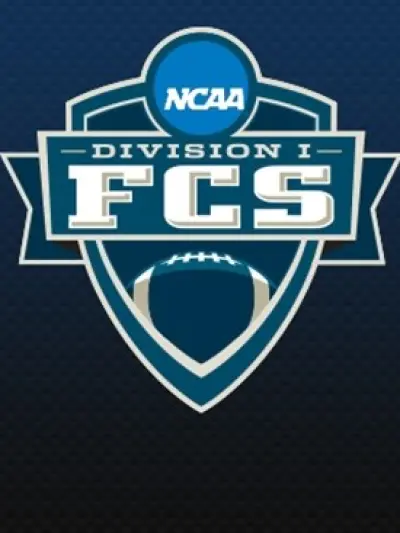College football is set to kick off the 2025 season in just over a week, when the No. 22 Iowa State Cyclones take on the No. 17 Kansas State Wildcats in Dublin, Ireland, for the Aer Lingus College Football Classic. The matchup, colloquially known as “Farmageddon,” is just the second time in college football history that two ranked opponents have faced off overseas.
The anticipation for not only the college football season to start is palpable, but that isn’t the only topic of conversation surrounding this matchup. The subject of international college football has once again become a topic of great discussion, with people on both sides of the aisle arguing their case for and against the playing of these games.
Farmageddon had 3.29 million viewers. It's not a Big 12 protected rivalry.
— Heartland College Sports (@Heartland_CS) December 1, 2023
Kansas vs. K-State drew 869,000 viewers, while Arizona vs. Arizona State drew 740,000 viewers. TCU-Baylor was on ESPN+.
Those three are protected. The Big 12 messed up. https://t.co/DuZ57DMGvg
There’s a lot to be said for both sides of this case. However, with plans well into the future for international contests to continue, there’s little sign of them stopping anytime soon, so let’s break down the history of international college football games, the pros of their existence, the cons, and where it will all go from here.
The History of International Play
College football games have been played abroad since 1874, when the Harvard Crimson played Canada’s McGill Redbirds at the Montreal Cricket Grounds in Montreal. This was also the first recorded contest between an international and an American college football team, with Harvard winning 3-0 and starting a yearly contest between the two schools that lasted until 1880.
North American Play
Canada was the only host to international college football until 1907, when the LSU Tigers matched up against the University of Havana in Havana, Cuba. The Tigers won decisively, stomping Havana 56-0. The Tulane Green Wave and Mississippi A&M (Now Mississippi State) Bulldogs also made the trip to Cuba in 1909 and 1911, respectively, both scoring shutout victories over the Cuban Athletic Club.
More Sports News
Cuba and Canada continued to host college football well into the early 20th century, with Mexico joining in on the fun in 1929 when the Mississippi College Choctaws played the UNAM Pumas. International college football took a seven-year hiatus after this before returning in 1936. The Auburn Tigers tied with the Villanova Wildcats 7-7 in Havana, Cuba, marking the first game to feature two American squads going abroad rather than an American team playing an international team.
That contest between the Tigers and Wildcats marked the last time college football would be played abroad until the end of World War II, with the final contest in Cuba to date taking place in 1946. College football was played sparingly in Mexico and Canada throughout the 1950s and 1960s, with a smattering of contests throughout the two decades.
Heading Overseas
The late 1970s, however, saw perhaps the most growth in international play since its inception. In 1976, the first game played overseas in Europe between two American colleges took place. The Texas A&M-Kingsville Javelinas played against the Henderson State Reddies in West Germany on June 1, 1976, with the Javelinas winning 17-8. The very next year, college football’s first game played in Asia was held in Tokyo, where the Grambling State Tigers beat the Temple Owls 35-32. College football’s first-ever regular-season opener played overseas happened a year later in 1978, when the Utah State Aggies played the Idaho State Bengals in Nishinomiya, Japan. Two bowls took place in Japan as well in 1978 and 1979, with the Mirage and Yokohama Bowls being played during bowl season.
Interesting and cool throwback from 1982 when the Tigers played Wake Forest in Japan. You can see the Wake helmets have their name in katakana. pic.twitter.com/ZP7Zcy0HCK
— ClemsonSportsNetwork (@ClemsonSportNet) April 23, 2024
Australia saw its first action in 1985 when the Wyoming Cowboys defeated the UTEP Miners in Melbourne, Australia, for the Australia Bowl. The British Isles and Ireland also saw their first college football games come to their shores in 1988, as the Richmond Spiders played the Boston University Terriers in London on Oct. 16 and the Army Black Knights played the Boston College Eagles on Nov. 19. The latter contest marked the debut of the Emerald Isles Classic, which later became the Aer Lingus College Football Classic and the mainstay international contest of today.
Where We Stand Today
College football found itself playing overseas yearly until the early to mid-1990s, when it scaled back long-distance international games in favor of games closer to home. Aside from Ireland (which took a 16-year hiatus from 1996 to 2012) and a few bowl games across North America, just two college football games have been played overseas since 1993. Both games were exhibitions, with the Drake Bulldogs playing the CONADEIP Stars in Tanzania (marking the first game played in Africa) and the Princeton Tigers playing Kwansei Gakuin in Japan.
NEWS: Michigan will open its 2026 season in Germany vs Western Michigan, @Brett_McMurphy reports🔥https://t.co/9WRcTnGWKO pic.twitter.com/7UBLVMftg4
— On3 (@On3sports) July 25, 2025
That could be set to change, however, as the college football classic played in Ireland has become a yearly event as of 2022 and multiple rumblings about a resurgence of play in Germany, the United Kingdom and Japan have surfaced. There has also been talk about international play expanding to China, South Africa, Brazil and other destinations around the globe. The possibilities are endless … but not everyone wants to see this expansion.
The Pros and Cons of International Play
There has long since been a fascination between college football and international play, as can be seen by the history behind it. However, the history lacks continuity, with long periods of hiatus, a varying degree of competition and an almost constant feeling of untested novelty surrounding the concept. The advent of the internet and globalization has brought this concept into a new light, though, and with more eyes on college football than ever before, the concept seems like it is getting less and less incongruous and unorthodox.
The industry of college football wants to go international, and with the efforts of individual schools to set up for regular international play, it seems as if that is what the schools want as well. More international notoriety means more money, and in this day and age of college football, more money is the main objective. However, in order to make money, you have to spend it, and does the cost outweigh the gain? Not just monetarily, but in time, effort, energy and other assets? This question has been the main source of controversy surrounding international play, with both sides making key points in the overall discussion.
The Pros
Global brand recognition is the goal of every business on Earth. It signifies success, reputation and influence. It also signifies that the brand likely makes a ton of money. The NCAA and the schools within its jurisdiction are all brands vying for as much recognition, success and monetary gain as possible. International games allow for the NCAA and these colleges to take their brands to new heights, introducing the game and their brands to completely new and fresh demographics.
College programs are “big business.”
— Ian Mumm (@FiveOnFiveHoops) August 7, 2025
The Athletic’s valuations of college football programs from 2024 put figures within range of top-50 global/household-name franchises.
Interesting aspect is majority of pro franchise growth from last year was in the $0.2-0.6B range, whereas… pic.twitter.com/j1gTF1tuyR
Not only that, but the novelty of these international games has staying power, even if it becomes a yearly tradition. The more you do it, the less untested it gets. As the brand grows, the reach does as well, and international games allow for said reach to have room to grow. The NFL is a great example of this, with their reach expanding as they expand more on international play.
This concept also offers mutual economic growth for the NCAA, the participating schools and the local economies of the destinations of play. In 2023, the Aer Lingus College Football Classic generated 180 Million Euros in positive economic impact for Dublin. This type of economic impact can be massive for cities around the globe and leave a positive impression, showing how these international games can be acts of diplomatic outreach as well.
Join the 24,000 international fans already set to travel for the 2025 @AerLingus College Football Classic 🏈☘️
— Aer Lingus College Football Classic (@cfbireland) August 7, 2025
With just over two weeks to go until @KStateFB & @CycloneFB touchdown in Dublin, the excitement levels are building both on and off the field!
Secure your ticket… pic.twitter.com/3oP280e7k7
In the case of individual schools as well, these games can be used as a recruiting advantage for both domestic and foreign athletes. Domestically speaking, the opportunity to travel overseas is enticing to many and athletes handle their own brands. Taking their brands internationally could pay major dividends. Discussing foreign athletes, there are athletes that could be introduced to the game of football or to a university from around the world, making for an even bigger talent crop to work with. Take the pipeline of punters and kickers from Australia, Ireland and the United Kingdom, for example.
Overall, the plethora of opportunities is what most proponents point to when discussing international play. However, those opportunities come at a cost, as discussed earlier, and for some, that cost is too great.
The Cons
For every opportunity international play provides, there’s about an equal number of costs associated with the venture. While the global brand recognition, revenue generation, diplomatic qualities and overall unique experience international play provides is something to take note of, so are the costs associated.
For one, international travel is not easy. Subjecting players, coaches, staff and fans to grueling travel filled with potential logistical nightmares and overall mental and physical strain can be backbreaking, especially when piled on an already demanding travel schedule of the regular football season. Given that these players are still student-athletes as well, travel such as this could impact their academic performance. While they may not be traveling internationally for every game, even one game such as this could upset the logistical, mental and physical fortitude of anyone involved.
bold idea for college football: every game is a destination game. everyone travels to campus and we play games at home stadiums full of fans and alumni https://t.co/VASAzTSj8o
— parker fleming (@statsowar) July 25, 2025
Another worry is the adjustments foreign destinations have to make to host international games. Field conditions, accommodations, event preparation and a host of other factors can lead to a disastrous showing, which could look bad on the host nation, the NCAA and the schools involved. Planning an event this large is a monumental task and to do it yearly requires a lot of time, effort, energy and manpower from all parties involved. There’s a reason events like the World Cup and Olympics are held every two to four years rather than yearly and things still go wrong at those. The risk taken and effort given is not always worth the reward.
International college football games are stupid and bad for the sport.
— CJ Vogel (@CJVogel_OTF) July 25, 2025
The best part about these games is the college campuses and tailgating environments. But yeah let’s go throw two teams who barely bowl eligible in Poland for no reason.
Finally, it goes back to money. Events such as these are expensive for all parties, but can be an especially great undertaking for the existing fans of the schools involved. College kids are not likely to be able to afford such ventures and saving up for these events can prove to be a steep undertaking for even the wealthiest of domestic fans. Fans are what make college football great, and while it’s awesome that the NCAA and the schools involved want to globalize their brands and introduce college football to brand new audiences, the current fanbase back home matters too. Scheduling these events on a yearly basis could lead to alienation of these fans, some of whom can barely afford to make a single domestic game.
An Uncertain Future
In the end, there are pros and cons to every single decision made, and the decision to hold international college football games is no different. The NCAA and its affiliated schools will tick someone off in one facet or another, no matter what they do. They’ve certainly made more controversial decisions in the past and will likely make more controversial ones in the future, but this is just another hot topic that the bigwigs in charge of it all have to mull over.
The discourse surrounding this concept in college football spheres has been nothing short of intriguing, to say the least. A lot of factors are battling it out against one another, with no one factor being the trump card for either side. One of the many wars of attrition surrounding college football that seems to rear its head every time an international game is set to take place.
For the time being, international play hasn’t proven to be a useless venture and could still prove to be a concept that benefits the game of college football at large. In this new day and age of the dollar being the strongest force in college athletics, whatever makes the most money and empowers the most brands is likely what the powers that be will stick to. At this current moment and with this current landscape, who knows what direction that will take future international contests and the game of college football?


